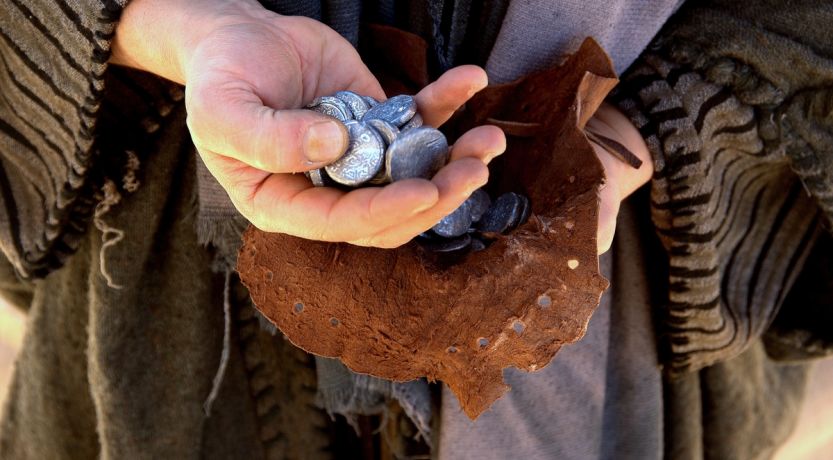Brief Overview
- Judas Iscariot, one of the twelve apostles, betrayed Jesus for 30 pieces of silver, as recorded in the Gospels.
- This amount was paid to him by the chief priests to hand Jesus over, an act that led to the crucifixion.
- Scholars debate the type of silver coin used, with many suggesting it was the Tyrian shekel or a similar currency.
- The value of these coins in today’s terms depends on historical economic context and modern valuation methods.
- Catholic teaching views Judas’ actions as a grave sin, though the monetary amount itself is secondary to the moral lesson.
- This article explores the historical, economic, and theological aspects to estimate the modern worth of those 30 pieces.
Detailed Response
Historical Context of the Silver Coins
The 30 pieces of silver paid to Judas are mentioned in Matthew 26:14-15 and Matthew 27:3-10. Biblical scholars generally agree that these were not random coins but a specific currency used in Judea during the first century. The most likely candidate is the Tyrian shekel, a silver coin widely circulated in the region. These coins were valued for their high silver content and consistent weight, making them a standard for temple transactions. The chief priests, who oversaw the temple, would have used such a currency to pay Judas. Each Tyrian shekel weighed about 14 grams and was roughly 94% pure silver. This gives us a starting point for calculating its material worth. Historically, 30 shekels was also the price of a slave, as noted in Exodus 21:32, suggesting it was a deliberate insult to Jesus. Understanding the coin’s identity is key to assessing its value today. The Tyrian shekel’s prominence in Jewish society at the time supports its use in this transaction.
Economic Value in the First Century
In the first century, 30 Tyrian shekels represented a significant but not enormous sum. A day’s wage for a laborer in Roman Judea was typically one denarius, a smaller silver coin. Scholars estimate that one Tyrian shekel was worth about four denarii based on its silver content and exchange rates. This means 30 shekels equaled approximately 120 denarii, or four months’ wages for a common worker. To put this in perspective, this amount could buy a modest plot of land or sustain a family for several months. However, it was far less than the wealth of the elite, such as the chief priests who paid it. The amount reflects a calculated payment—enough to tempt Judas but not a fortune. Catholic tradition does not focus on the monetary value but on the betrayal it facilitated. Still, this economic context helps us bridge the gap to modern terms. The payment’s modesty underscores the pettiness of Judas’ choice.
Calculating the Silver’s Material Worth Today
One way to estimate the modern value is by the silver content of the coins. A Tyrian shekel, at 14 grams and 94% purity, contains about 13.16 grams of pure silver. With 30 coins, that totals 394.8 grams, or roughly 0.395 kilograms. As of March 31, 2025, the price of silver fluctuates, but let’s assume a conservative spot price of $25 per ounce. Since one ounce equals 31.1035 grams, 394.8 grams is about 12.7 ounces. Multiplying 12.7 by $25 gives approximately $317.50. This figure represents the raw material value of the silver today. However, this method ignores the coins’ historical or numismatic worth, which could increase their value significantly. For a basic material estimate, $317.50 is a starting point. This approach, while simple, overlooks the economic differences between antiquity and now.
Adjusting for Purchasing Power
Raw silver value doesn’t fully capture what 30 shekels meant in Judas’ time. A better method is to compare purchasing power. If 30 shekels equaled 120 denarii, or four months’ wages, we can scale that to today’s economy. In the United States, the median monthly wage in 2025 is around $4,000, based on recent trends. Four months at this rate totals $16,000. This suggests Judas’ payment might be worth $16,000 today in terms of labor value. This figure aligns with what a modest worker might earn over a similar period now. It also reflects the coin’s ability to buy goods or services in its era. Catholic scholars might note that this sum, while notable, pales beside the infinite value of Christ’s sacrifice. This estimate offers a practical modern equivalent.
Numismatic Value of Ancient Coins
Another angle is the collectible value of Tyrian shekels. Today, these coins are rare artifacts, prized by historians and collectors. A well-preserved Tyrian shekel can fetch between $1,000 and $5,000 at auction, depending on condition. If Judas’ 30 pieces were in good shape, their numismatic worth could range from $30,000 to $150,000. This far exceeds their raw silver or wage-based value. However, the Gospels don’t suggest these were specially minted or preserved coins. They were likely standard currency, used and circulated. Still, their association with a pivotal biblical event could inflate their worth to collectors. This method highlights how historical significance affects value. It’s a speculative but plausible estimate.
Theological Perspective on the Amount
Catholic teaching emphasizes the moral weight of Judas’ act over the monetary sum. The Catechism of the Catholic Church (CCC 1851) identifies betrayal as a grave sin, rooted in greed or despair. The 30 pieces of silver symbolize Judas’ choice to value material gain over loyalty to Christ. The exact amount—whether small or large—matters less than its role in salvation history. Some Church Fathers, like St. Augustine, saw the sum as fulfilling prophecy, linking it to Zechariah 11:12-13. The priests later used the money to buy a potter’s field, reinforcing its symbolic purpose. Theologically, the coins represent human weakness, not wealth. This perspective shifts focus from economics to ethics. Catholic doctrine invites reflection on sin’s cost, not the silver’s price. The amount’s modern worth is secondary to its lesson.
Comparison to Other Biblical Payments
The Bible offers context through other monetary references. In Genesis 37:28, Joseph was sold for 20 shekels, less than Judas’ sum. The slave price of 30 shekels in Exodus 21:32 matches Judas’ payment exactly. These parallels suggest 30 shekels was a standard value for a human life in ancient law. By contrast, King David paid 50 shekels for a threshing floor in 2 Samuel 24:24, a different transaction type. These examples show the payment’s consistency with Old Testament norms. Judas’ sum wasn’t arbitrary; it carried cultural weight. Catholic exegesis might connect this to Christ’s role as a servant, priced as such. The comparison enriches our understanding of its significance. It ties Judas’ act to a broader scriptural pattern.
Inflation and Economic Shifts
Economic conditions have changed vastly since the first century. Inflation, currency devaluation, and global markets complicate direct comparisons. The denarius lost value over centuries within the Roman Empire itself. Today’s dollars reflect a complex economy, unlike Judea’s agrarian system. Adjusting for these shifts, 120 denarii might align with a low to middle-class income today. Some economists peg it closer to $10,000-$20,000, depending on the metric. This range accounts for differences in living costs and labor value. Catholic scholars rarely dwell on such calculations, focusing instead on spiritual implications. Still, these adjustments refine our estimate. The $16,000 figure remains a reasonable midpoint.
The Coins’ Fate in Scripture
After betraying Jesus, Judas returned the money in remorse, as per Matthew 27:3-5. The priests deemed it “blood money” and bought a field for burying foreigners. Known as the Field of Blood, this purchase fulfilled prophecy (Zechariah 11:13). The coins themselves didn’t enrich anyone; they served a grim purpose. This outcome underscores their tainted nature in Catholic thought. The physical silver vanished from the narrative, leaving its value symbolic. Tracking their fate reinforces the moral over the material. The story ends with repentance, not profit. This detail shapes how we view the sum’s worth. Its legacy is one of loss, not gain.
Broader Implications for Today
Judas’ 30 pieces prompt reflection on greed and betrayal in modern life. Catholic teaching warns against valuing money over faith (CCC 2113). The sum’s modest size—whether $317 or $16,000—shows how little it takes to compromise integrity. Today, people might betray trust for far less. The lesson applies beyond economics to personal choices. The Church urges penance and reconciliation, as Judas’ despair lacked (CCC 1459). Estimating the silver’s worth highlights this contrast. It’s a cautionary tale, not a treasure hunt. The article’s calculations serve this broader point. Faith, not finance, is the focus.
Conclusion: A Range of Estimates
Combining these methods, the 30 pieces of silver range from $317 (silver value) to $150,000 (numismatic value). The purchasing power estimate of $16,000 strikes a practical balance. Each figure reflects a different lens—material, economic, or historical. Catholic tradition prioritizes the act’s gravity over its price. The exact amount matters less than its role in Christ’s passion. These calculations offer insight, not finality. They bridge ancient and modern perspectives. The range invites readers to consider both facts and faith. Ultimately, the silver’s worth is a footnote to its meaning. Judas’ choice echoes louder than any coin.
Signup for our Exclusive Newsletter
-

- Join us on Patreon for premium content
- Checkout these Catholic audiobooks
- Get FREE Rosary Book
- Follow us on Flipboard
Discover hidden wisdom in Catholic books; invaluable guides enriching faith and satisfying curiosity. Explore now! #CommissionsEarned
- The Early Church Was the Catholic Church
- The Case for Catholicism - Answers to Classic and Contemporary Protestant Objections
- Meeting the Protestant Challenge: How to Answer 50 Biblical Objections to Catholic Beliefs
As an Amazon Associate, I earn from qualifying purchases. Thank you.

